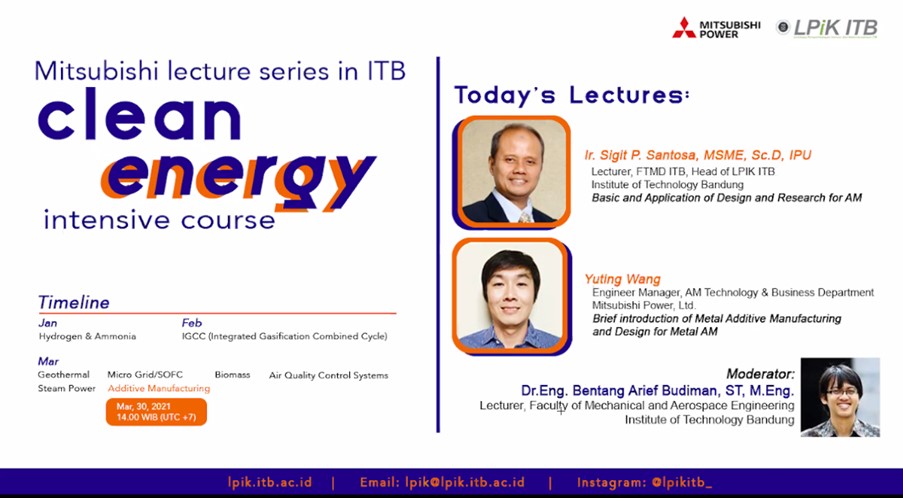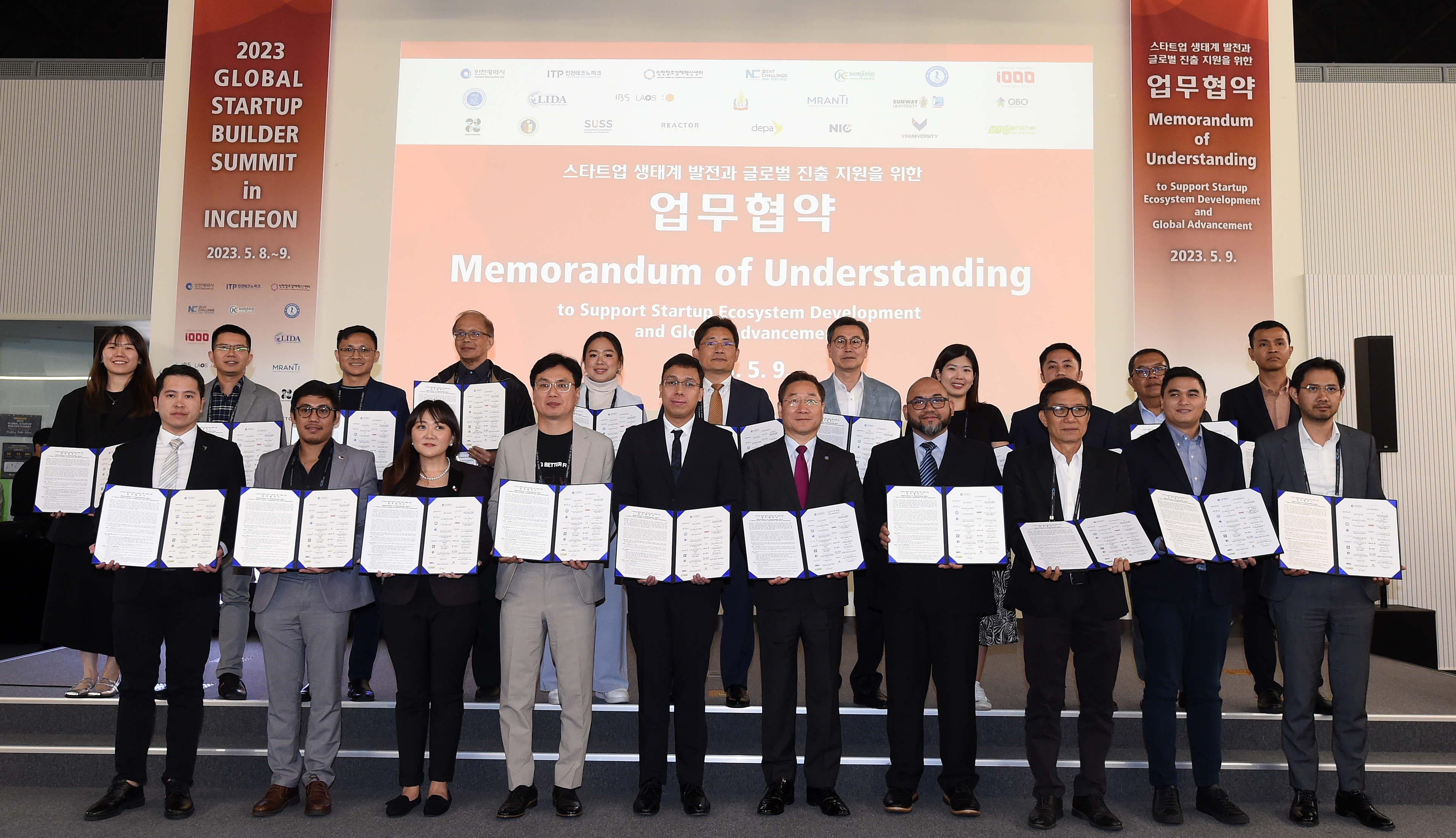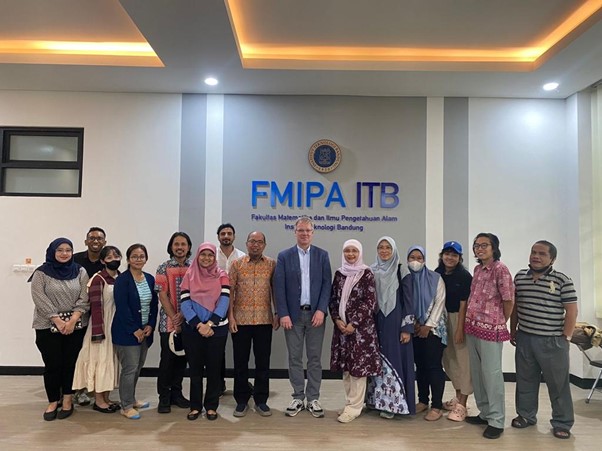Mitsubishi & LPIK ITB Joint Lecture: Additive Manufacturing

BANDUNG, itb.ac.id –Institute for Innovation and Entrepreneurship Development ITB (LPIK ITB) and Mitsubishi Power hosted a series of intensive courses entitled Clean Energy: Additive Manufacturing on Tuesday (30/03/2021).
This webinar was held online via Zoom and led by the lecturer of the Faculty of Mechanical and Aerospace Engineering ITB, Dr. Eng. Benteng Arief Budiman, S.T., M.Eng. The head of LPIK ITB and FTMD ITB lecturer, Ir. Sigit P. Santosa, MSME, Sc.D., IPU, and Engineer Manager Mitsubishi Power, Yuting Wang, were invited to share their thoughts on the issue. The webinar was delivered in English.
The first session about Design and Application for Research in Additive Manufacturing Technology was opened by Ir. Sigit P. Santosa, MSME, Sc.D., IPU. He explained four engineering innovations in the 4.0 industry namely autonomous robot, virtual product development, horizontal and vertical system integration, and additive manufacturing. “Even though it is now the 4.0 industry era, we will not replace our human resources,” he said. Ir. Sigit also described ten most needed abilities in 2020.
There are several types of materials required for the application of additive manufacturing in engineering namely lightweight structures, energy absorption, metamaterials, thermal management, and bioscaffolds. Various types of materials based on their shapes and patterns were also revealed, including honeycomb, foam, and lattice. The use of additive manufacturing technologies is useful to solve the process cycle and financial problems found in the manufacturing processes.
In the next session, Yuting Wang discussed about the additive manufacturing in Mitsubishi Power. He stated, “Additive manufacturing can be applied on various sectors.” Yuting Wang then explained that those sectors are education, fashion, renewable energy, machinery, food, and musical instruments. In additive manufacturing, several things, like advanced material and element technologies, are needed and developed through high efficiency power generators. Diverse innovations in the field of material have been produced through additive manufacturing, including generative design, self-support lattice, and material advancement.
Two of the most used and developed materials in additive manufacturing are powder and wire. “Powder and wire have many benefits for additive manufacturing,” Yutin Wang stated. These materials are very essential because they can adapt well with cooling processes and the use of fine microstructure powder effectively.
Reporter: Yoel Enrico Meiliano (TPB FTI, 2020)
Translator: Sekar Dianwidi Bisowarno (Rekayasa Hayati, 2019)

scan for download







